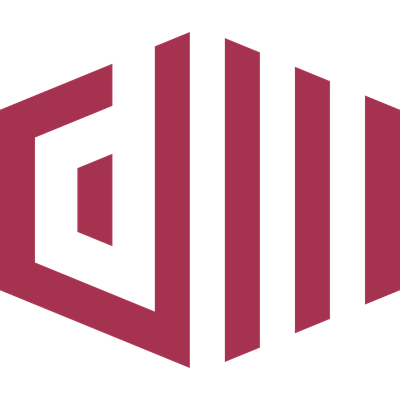What does mongolian language mean?
Definitions for mongolian language
mon·go·lian lan·guage
This dictionary definitions page includes all the possible meanings, example usage and translations of the word mongolian language.
Wikipedia
Mongolian language
Mongolian is the official language of Mongolia and both the most widely spoken and best-known member of the Mongolic language family. The number of speakers across all its dialects may be 5.2 million, including the vast majority of the residents of Mongolia and many of the ethnic Mongol residents of the Inner Mongolia Autonomous Region of the People's Republic of China. In Mongolia, the Khalkha dialect is predominant, and is currently written in both Cyrillic and traditional Mongolian script (and at times in Latin for social networking), while in Inner Mongolia, the language is dialectally more diverse and is written in the traditional Mongolian script. In the discussion of grammar to follow, the variety of Mongolian treated is Standard Khalkha Mongolian (i.e., the standard written language as formalized in the writing conventions and in grammar as taught in schools), but much of what is to be said is also valid for vernacular (spoken) Khalkha and for other Mongolian dialects, especially Chakhar. Some classify several other Mongolic languages like Buryat and Oirat as dialects of Mongolian, but this classification is not in line with the current international standard. Mongolian has vowel harmony and a complex syllabic structure for a Mongolic language that allows clusters of up to three consonants syllable-finally. It is a typical agglutinative language that relies on suffix chains in the verbal and nominal domains. While there is a basic word order, subject–object–predicate, ordering among noun phrases is relatively free, as grammatical roles are indicated by a system of about eight grammatical cases. There are five voices. Verbs are marked for voice, aspect, tense and epistemic modality/evidentiality. In sentence linking, a special role is played by converbs. Modern Mongolian evolved from Middle Mongol, the language spoken in the Mongol Empire of the 13th and 14th centuries. In the transition, a major shift in the vowel-harmony paradigm occurred, long vowels developed, the case system changed slightly, and the verbal system was restructured. Mongolian is related to the extinct Khitan language. It was believed that Mongolian is related to Turkic, Tungusic, Korean and Japonic languages but this view is now seen as obsolete by a majority of (but not all) comparative linguists. These languages have been grouped under the Altaic language family and contrasted with the Mainland Southeast Asia linguistic area. However, instead of a common genetic origin, Clauson, Doerfer, and Shcherbak proposed that Turkic, Mongolic and Tungusic languages form a Sprachbund, rather than common origin. Mongolian literature is well attested in written form from the 13th century but has earlier Mongolic precursors in the literature of the Khitan and other Xianbei peoples. The Bugut inscription dated to 584 CE and the Inscription of Hüis Tolgoi dated to 604-620 CE appear to be the oldest substantial Mongolic or Para-Mongolic texts discovered.
Numerology
Chaldean Numerology
The numerical value of mongolian language in Chaldean Numerology is: 9
Pythagorean Numerology
The numerical value of mongolian language in Pythagorean Numerology is: 6
Translation
Find a translation for the mongolian language definition in other languages:
Select another language:
- - Select -
- 简体中文 (Chinese - Simplified)
- 繁體中文 (Chinese - Traditional)
- Español (Spanish)
- Esperanto (Esperanto)
- 日本語 (Japanese)
- Português (Portuguese)
- Deutsch (German)
- العربية (Arabic)
- Français (French)
- Русский (Russian)
- ಕನ್ನಡ (Kannada)
- 한국어 (Korean)
- עברית (Hebrew)
- Gaeilge (Irish)
- Українська (Ukrainian)
- اردو (Urdu)
- Magyar (Hungarian)
- मानक हिन्दी (Hindi)
- Indonesia (Indonesian)
- Italiano (Italian)
- தமிழ் (Tamil)
- Türkçe (Turkish)
- తెలుగు (Telugu)
- ภาษาไทย (Thai)
- Tiếng Việt (Vietnamese)
- Čeština (Czech)
- Polski (Polish)
- Bahasa Indonesia (Indonesian)
- Românește (Romanian)
- Nederlands (Dutch)
- Ελληνικά (Greek)
- Latinum (Latin)
- Svenska (Swedish)
- Dansk (Danish)
- Suomi (Finnish)
- فارسی (Persian)
- ייִדיש (Yiddish)
- հայերեն (Armenian)
- Norsk (Norwegian)
- English (English)
Word of the Day
Would you like us to send you a FREE new word definition delivered to your inbox daily?
Citation
Use the citation below to add this definition to your bibliography:
Style:MLAChicagoAPA
"mongolian language." Definitions.net. STANDS4 LLC, 2024. Web. 26 Oct. 2024. <https://www.definitions.net/definition/mongolian+language>.


Discuss these mongolian language definitions with the community:
Report Comment
We're doing our best to make sure our content is useful, accurate and safe.
If by any chance you spot an inappropriate comment while navigating through our website please use this form to let us know, and we'll take care of it shortly.
Attachment
You need to be logged in to favorite.
Log In